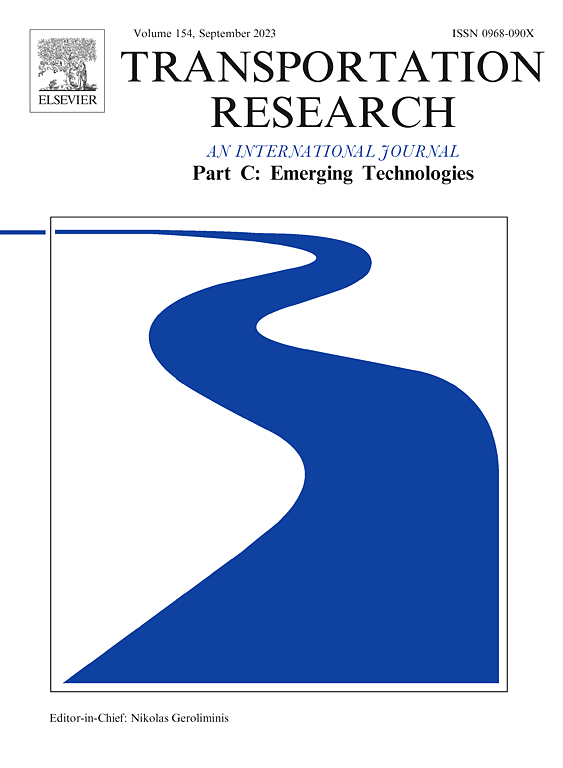Vehicle routing in one-way carsharing service with ridesharing options: A variable neighborhood search algorithm
IF 7.6
1区 工程技术
Q1 TRANSPORTATION SCIENCE & TECHNOLOGY
Transportation Research Part C-Emerging Technologies
Pub Date : 2025-02-01
DOI:10.1016/j.trc.2024.104983
引用次数: 0
Abstract
The widespread adoption of one-way carsharing systems faces a significant hurdle in the form of vehicle imbalance. To address this challenge, this study proposes a novel hybrid operator-user-based relocation scheme that integrates one-way carsharing systems with ridesharing options, enabling users to complete their trips by sharing carsharing vehicles with others. This integration necessitates the concurrent optimization of vehicle relocation routing and ridesharing matching strategies by carsharing operators. The underlying problem, termed the vehicle relocation and ridesharing matching problem, is formulated as a mixed-integer linear program with the objective of maximizing total system profit. Given the NP-hard nature of the vehicle relocation and ridesharing matching problem, a variable neighborhood search algorithm is developed for its solution. The algorithm incorporates an efficient route evaluation scheme to improve the efficiency of the algorithm. Numerical experiments demonstrate that the proposed solution method is capable of producing high-quality solutions within short computing time. We also show that the mutual benefits of the proposed integrated scheme for both carsharing operators and users, including increased profitability, reduced travel costs, and improved service quality.
求助全文
约1分钟内获得全文
求助全文
来源期刊
CiteScore
15.80
自引率
12.00%
发文量
332
审稿时长
64 days
期刊介绍:
Transportation Research: Part C (TR_C) is dedicated to showcasing high-quality, scholarly research that delves into the development, applications, and implications of transportation systems and emerging technologies. Our focus lies not solely on individual technologies, but rather on their broader implications for the planning, design, operation, control, maintenance, and rehabilitation of transportation systems, services, and components. In essence, the intellectual core of the journal revolves around the transportation aspect rather than the technology itself. We actively encourage the integration of quantitative methods from diverse fields such as operations research, control systems, complex networks, computer science, and artificial intelligence. Join us in exploring the intersection of transportation systems and emerging technologies to drive innovation and progress in the field.

 求助内容:
求助内容: 应助结果提醒方式:
应助结果提醒方式:


